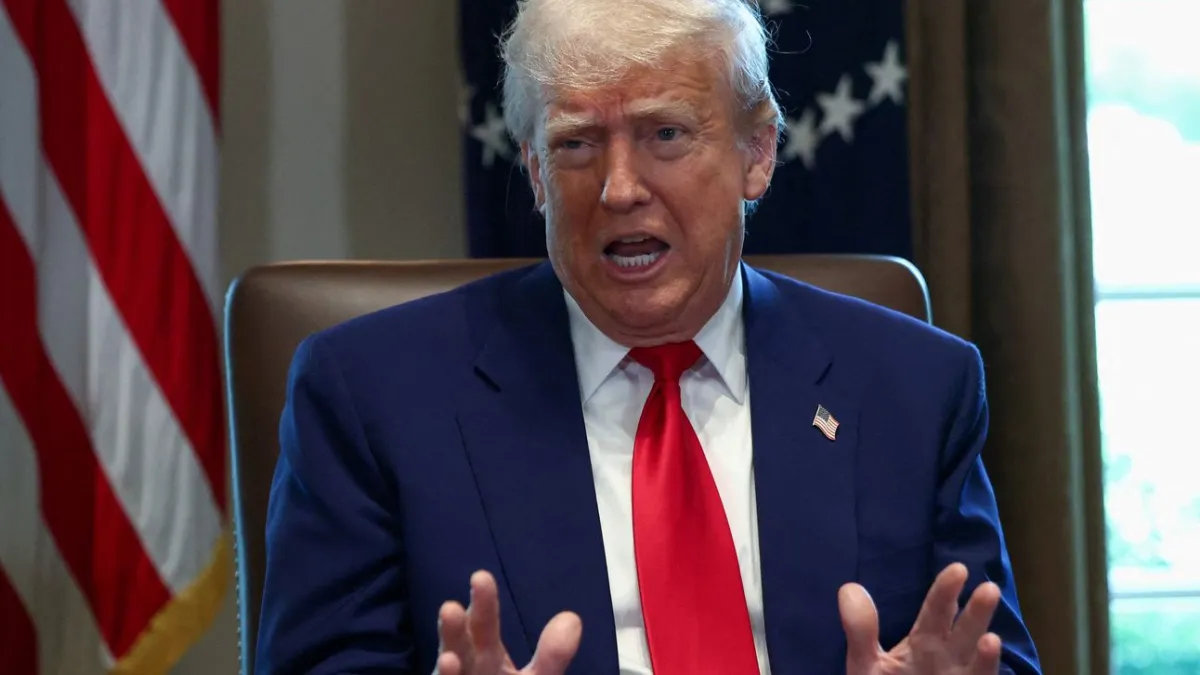
President Trump reignited his one-man global trade war this week, slapping new tariffs starting August 1 on imports from more than a dozen countries, including major trading partners Japan and South Korea. On Tuesday, he doubled down on that effort, saying there would be no more extensions of the deadline for the “reciprocal” tariffs on many countries he announced back in April, which he had twice delayed, supposedly to give countries more time to negotiate new trade agreements.
On his social media platform, Trump announced that “there will be no change” to the August deadline, leaving just a few weeks for countries to agree to alternative terms. “In other words, all money will be due and payable starting AUGUST 1, 2025 - No extensions will be granted,” he wrote.
The ‘TACO trade’ persists: Markets plunged in April after Trump announced his new tariff plan, which would impose historically high import fees on goods from most countries around the world. The delay of those tariffs provided immediate relief, and some investors began to talk about the “TACO trade,” based on the belief that the high tariffs would never take effect, at least not in full, because “Trump Always Chickens Out.” That view of the tariffs continues to hold sway to some extent, as indicated by the muted reaction in global markets to Trump’s most recent announcements.
“The ‘TACO’ (Trump Always Chickens Out) trade is back on the table as the Trump administration’s latest announcements on tariffs offered some relief to financial markets,” Dan Coatsworth of AJ Bell Investment said Tuesday, per CNBC. The relief came primarily in the form of another delay, with a July 9 deadline for the tariffs being moved to August 1.
Jonas Goltermann of Capital Economics said Tuesday that he expects tariffs to remain roughly where they are currently in the long run. “Markets are (probably) right to ignore Trump’s latest tariff flip-flop,” he wrote, per NBC News. “While continued noise around tariffs could well generate some volatility in the near term, we think the bar for another major sell-off remains quite high.”
The TACO theory may not hold forever, though. Trump announced that he plans to impose a 50% tariff on copper imports, and Commerce Secretary Howard Lutnick said that tariff could take effect as soon as the end of July. Trump also said that he plans to eventually impose a tariff as high as 200% on pharmaceutical imports, to encourage drugmakers to manufacture as much as they can in the U.S.
In addition to the sector-specific tariffs, which are already raising prices for key materials including steel and aluminum, the full slate of national tariffs could take effect in a few weeks, as promised — an outcome that may be more likely if Trump bristles at the TACO epithet.
“At a very basic level, nothing actually happened based on Trump sending these letters, so there’s no reason to panic over headlines,” Tobin Marcus, an analyst at Wolfe Research, wrote, referring to the letters Trump sent to the leaders of the countries he imposed new tariffs on this week. “But we think these moves do contain some signal about where the trade war is heading, and that signal is mostly hawkish.”
Even if Trump’s tariff scheme remains unresolved through yet more extensions, the mere threat of them creates a situation that paralyzes international firms as they try to plan for the future. “The ongoing uncertainty,” ING analysts wrote in a research note, “could do almost as much economic harm as actual tariffs.”
Tariff costs already at historic highs: Trump may delay the tariffs once again, but the tariffs already in place have risen near historic highs. According to a new analysis by the Yale Budget Lab, U.S. consumers currently face an effective tariff rate of 17.9% — the highest level since 1934, and an increase of more than 15 percentage points from last year.
The Yale researchers said that price increases for imported goods will likely push importers to seek out sources in lower-tariff nations. For example, an importer could buy more from suppliers in Mexico and less from suppliers in China, thereby lowering their net effective tariff rate. Over time, that process would push the average effective tariff rate down to 16.5% — the highest rate since 1936.
In terms of prices, the tariffs would raise the price level by 1.7% in the short run, the researchers said. That’s the equivalent of a loss of income of $2,300 for the average U.S. household. After importers find alternative sources, the price level settles into an estimated 1.5% increase, equivalent to a loss of $1,900 per household.
The price increases would weigh on the economy, reducing GDP growth by 0.7 points in 2025, the researchers said. Over the long haul, the economy is persistently smaller by 0.4 points, a loss worth roughly $110 billion per year.
As a tax on domestic firms and consumers, the tariffs raise federal revenues substantially. From 2025 to 2034, the tariffs would generate about $2.4 trillion in revenues in a conventional analysis. On a dynamic basis, which includes feedback effects — which in this case are negative by about $400 billion — the tariffs would produce about $2.0 trillion over a decade.
The tariffs hit low-income households the hardest. “Tariffs are a regressive tax, especially in the short-run,” the report says. Although the effects are more ambiguous over the long-run, households at the bottom of the income ladder will lose about three times as much from the tariffs as households at the top when measured as a share of income.